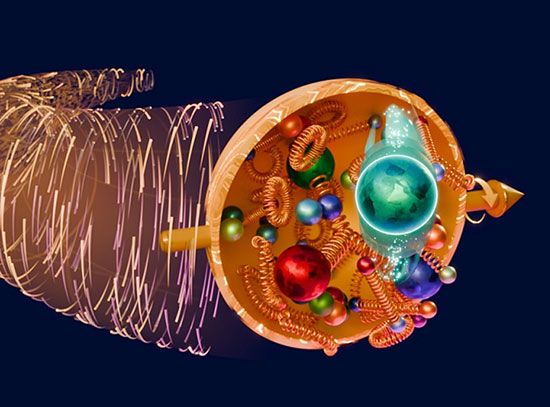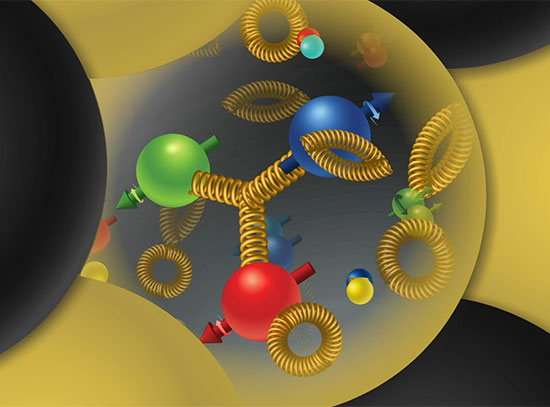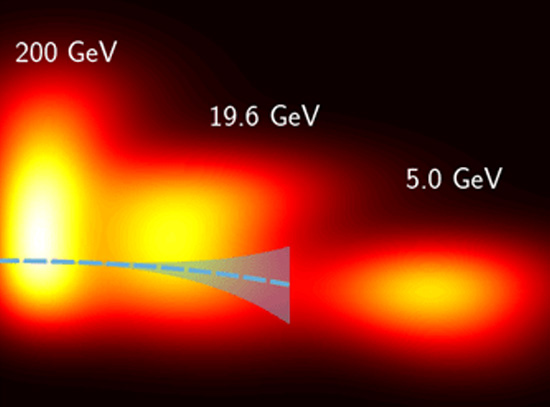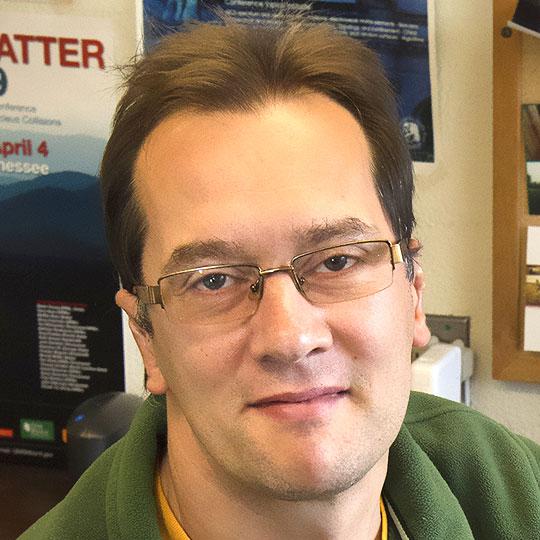Nuclear Theory Group
The Brookhaven National Laboratory Nuclear Theory Group conducts a vigorous research program in all areas of high energy Quantum Chromodynamics (QCD) including the spin and three dimensional structure of the hadron, the many-body dynamics of quarks and gluons in hadrons and nuclei at high energies, the structure of the QCD phase diagram in extreme conditions, and the properties of quark-gluon matter in and out of equilibrium.
Group members have strong interdisciplinary research interests and collaborations in the structure and dynamics of strongly correlated systems in condensed matter physics, atomic physics and cosmology. The research program of the group is strongly aligned with the polarized proton and heavy-ion experimental programs at the Relativistic Heavy Ion Collider (RHIC), with explorations of QCD at the Large Hadron Collider, and in the physics of the future Electron-Ion Collider. There is also a strong synergy between research in the Nuclear Theory Group and the research program of the High Energy Theory Group and the RIKEN-BNL Center.
Nuclear Theory Group members actively participate in the Center for Frontiers in Nuclear Science and the Co-design Center for Quantum Advantage (C2QA).
See AllNews and Research Highlights
-

Dorothy Davis
(631) 344-2524, dorothyd@bnl.gov
Announcements
-
There are no announcements at this time.
Upcoming Events
There are no events scheduled at this time.
Other Theory Groups
High Energy Theory
The High Energy Theory Group has active programs in all areas of particle physics, encompassing Standard Model and beyond. Topics of interest include electroweak symmetry breaking and related phenomena, collider physics, precision measurements, physics of flavor, higher order calculations, neutrino interactions, phenomenology of dark sectors, and particle cosmology.
EIC Theory Institute
The aim of the BNL EIC Theory Institute is to broaden and deepen our understanding of the scientific possibilities that will be created by the Electron-Ion Collider. Towards this end, a primary goal of the Institute is a vibrant and diverse program of short-term, mid-term and long-term visitors who enrich and complement EIC research (broadly defined) being conducted at Brookhaven National Laboratory.
CFNS
The Center for Frontiers in Nuclear Science (CFNS) is an international research hub for physics related to the Electron-Ion Collider. It brings together Stony Brook University faculty, Brookhaven staff, and scientists around the world with students and new scientific talent to investigate the structure of nucleons and nuclei.
RIKEN BNL Research Center
How was matter formed after the Big Bang? Scientists at the RBRC are pursuing this ultimate question of modern physics to understand the origin of matter and the universe. Their goal is to establish a new field of physics by coordinating theoretical and experimental research.









